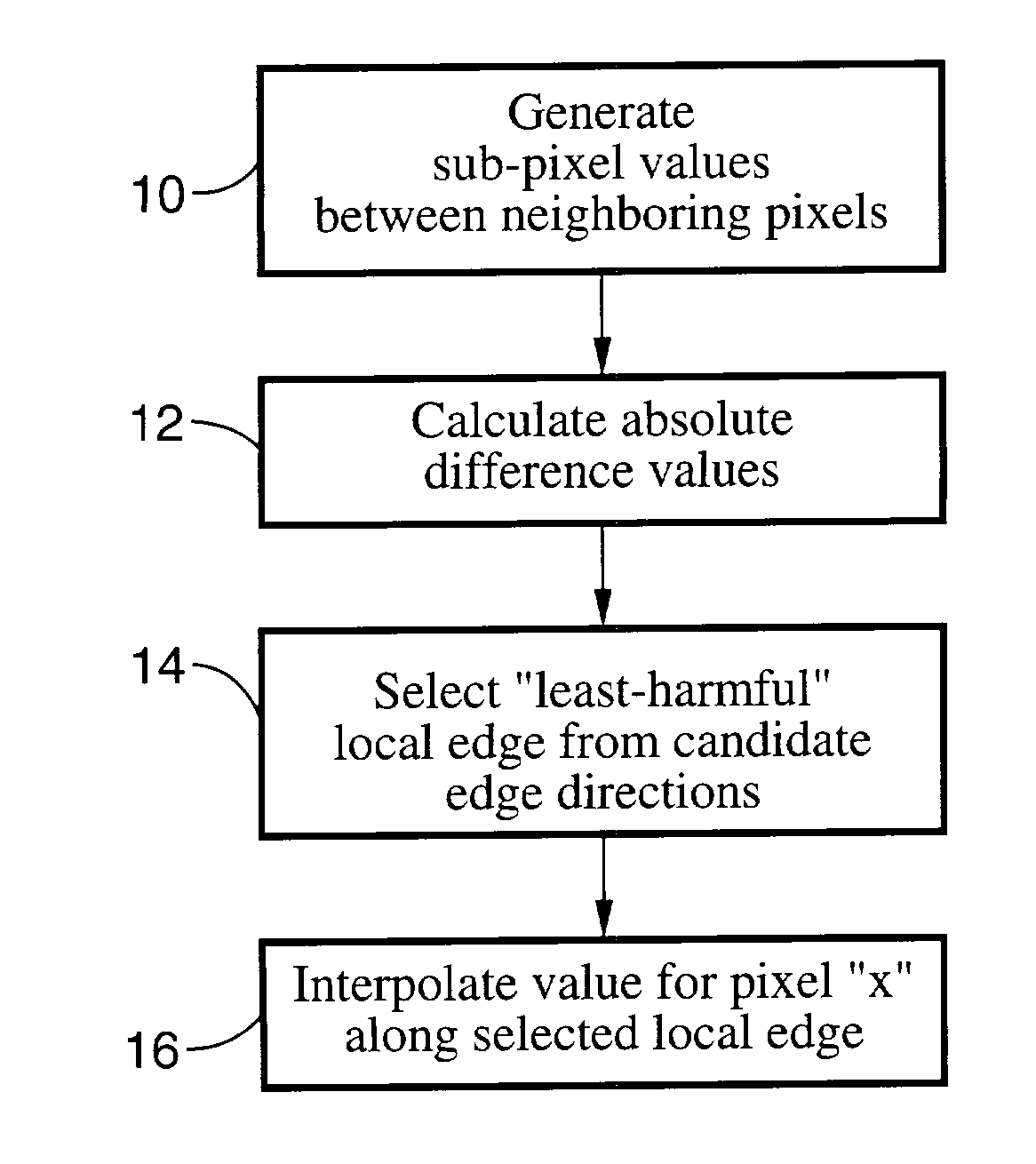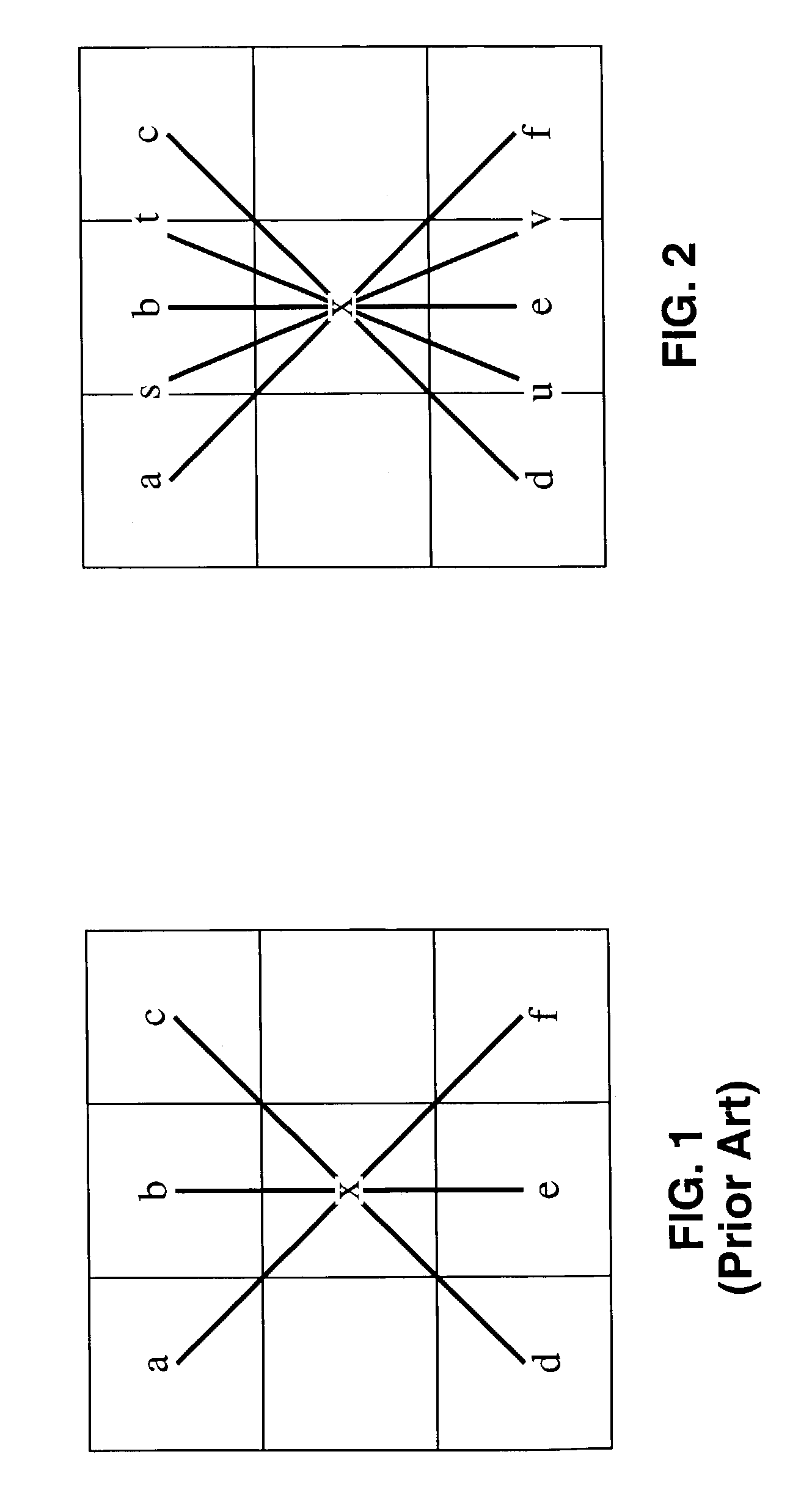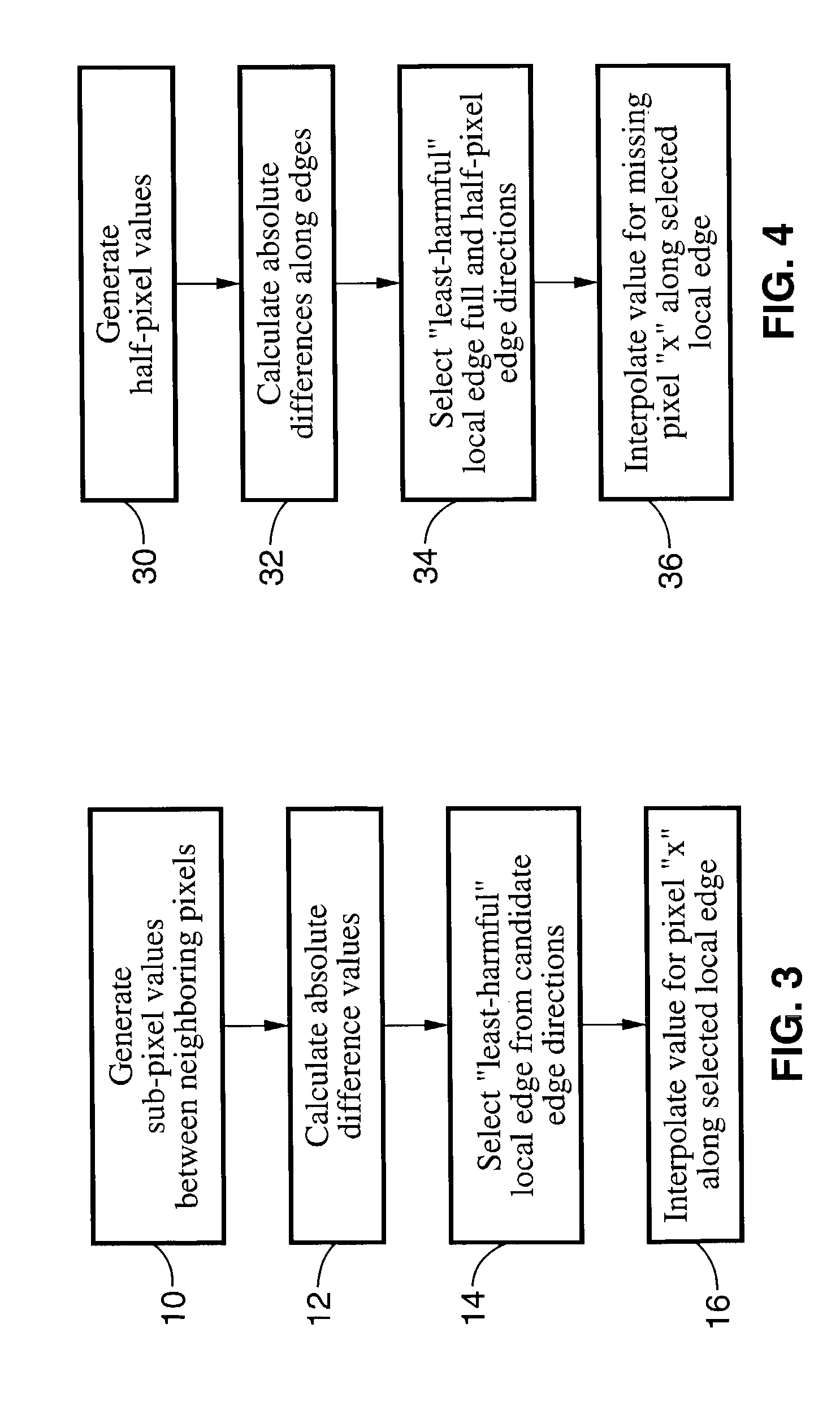Method of performing sub-pixel based edge-directed image interpolation
a subpixel and edge-directed image technology, applied in the field of image sequence processing, can solve the problems achieve the effects of increasing the computational complexity of the pixel interpolation process, increasing the accuracy of the resultant pixel interpolation process, and increasing the accuracy of the edge-directed pixel interpolation process
- Summary
- Abstract
- Description
- Claims
- Application Information
AI Technical Summary
Benefits of technology
Problems solved by technology
Method used
Image
Examples
Embodiment Construction
[0025]Referring more specifically to the drawings, for illustrative purposes the present invention is embodied in the apparatus generally shown in FIG. 2 through FIG. 6. It will be appreciated that the apparatus may vary as to configuration and as to details of the parts, and that the method may vary as to the specific steps and sequence, without departing from the basic concepts as disclosed herein.
[0026]The accuracy of pixel interpolation within an image frame may be increased by increasing the number of candidate local edge directions within which a “least harmful” edge may be selected. The present invention increases, or alters, the directions of candidate local edges by considering edges that are defined by neighboring sub-pixel locations. Each sub-pixel location may be generated by taking weighted averages, non-weighted averages, or similar normalization calculations, within a group of pixels. It will be appreciated that numerous candidate local edge arrangements may be config...
PUM
 Login to View More
Login to View More Abstract
Description
Claims
Application Information
 Login to View More
Login to View More - R&D
- Intellectual Property
- Life Sciences
- Materials
- Tech Scout
- Unparalleled Data Quality
- Higher Quality Content
- 60% Fewer Hallucinations
Browse by: Latest US Patents, China's latest patents, Technical Efficacy Thesaurus, Application Domain, Technology Topic, Popular Technical Reports.
© 2025 PatSnap. All rights reserved.Legal|Privacy policy|Modern Slavery Act Transparency Statement|Sitemap|About US| Contact US: help@patsnap.com



